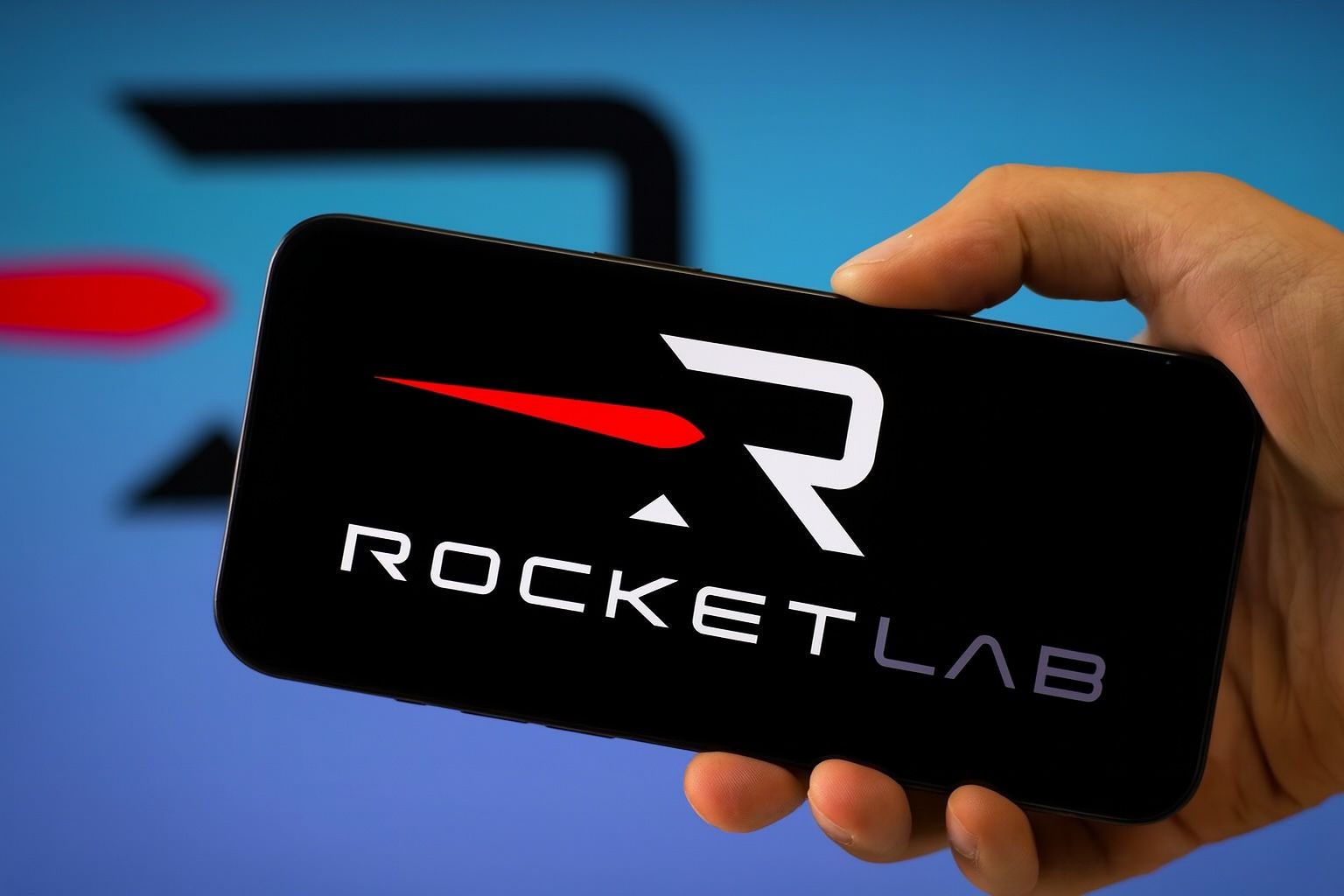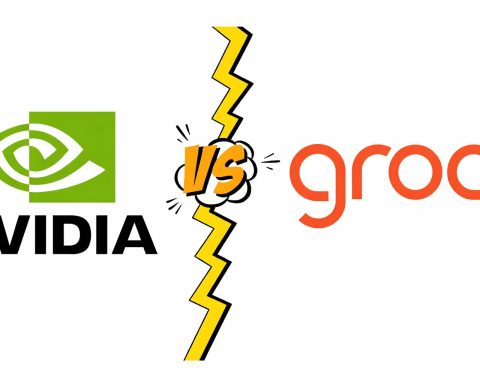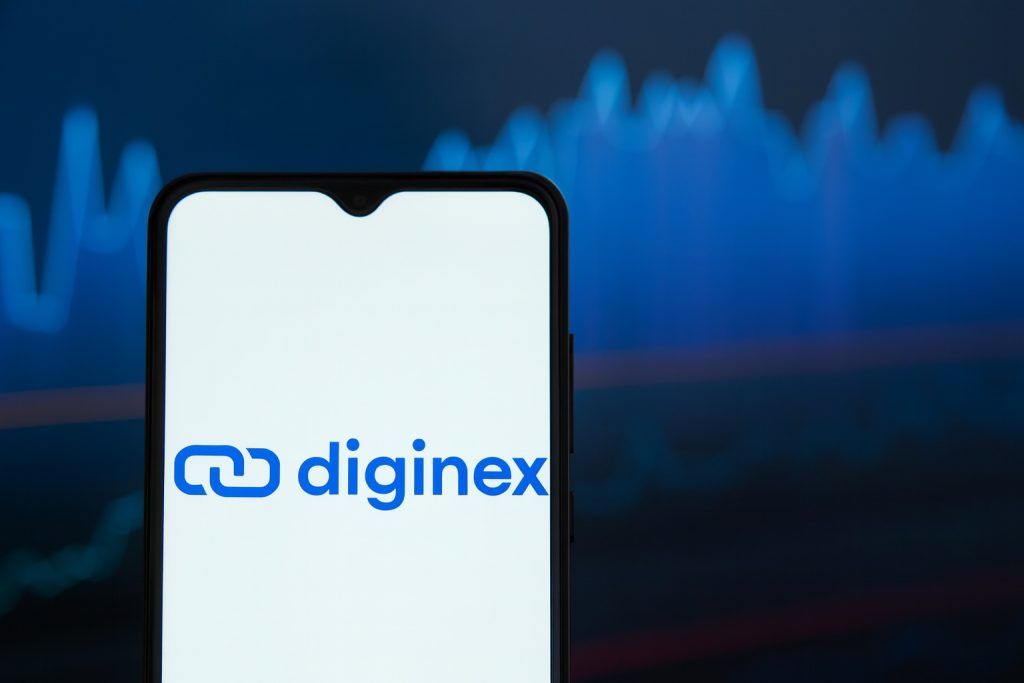- Revenue acceleration: Rocket Lab posted record revenue in 2025. Q1 revenue reached $123 million, up 32 % YoY, and Q2 revenue jumped to $144 million, representing 36 % YoY growth with gross margins expanding by 650 basis points [1] [2]. Backlog approached $1 billion, with ~58 % expected to convert within 12 months [3].
- Guidance signals momentum: For Q3 2025 management guided revenue of $145–$155 million, gross margins of 35–37 %, GAAP operating expenses $104–109 million, and adjusted EBITDA loss narrowed to $21–$23 million [4]. CEO Peter Beck said the company is “on track for a record year of launches and spacecraft deliveries” [5].
- Strategic acquisitions: Rocket Lab announced the $275 million cash‑and‑stock acquisition of Geost, LLC to bring missile‑warning payload technology in‑house [6], and the $75 million purchase of German laser‑communications company Mynaric with potential earn‑outs, boosting its European footprint and laser terminal portfolio [7]. Both deals closed after Mynaric’s debt restructuring [8].
- Major contracts: New multi‑launch agreements include a 10‑launch contract with Synspective, bringing its backlog to 21 missions—the largest from a single customer [9]. Rocket Lab won NASA’s Aspera mission under the VADR contract [10], launched five Electron missions in Q2 and prepared its larger Neutron rocket for maiden flight [11]. It also secured U.S. Department of Defense contracts for hypersonic test flights (MACH‑TB) and point‑to‑point cargo experiments [12] [13].
- Corporate restructuring: Management reorganised into Rocket Lab Corporation, a holding company structure, to provide flexibility while keeping shares convertible 1‑for‑1 [14].
Business Overview & Financial Performance
Rocket Lab USA Inc. operates two main divisions—Launch Services and Space Systems. Launch Services offers the Electron small‑lift rocket, the HASTE suborbital platform for hypersonic tests, and is developing the Neutron medium‑class, partially reusable launch vehicle. Space Systems supplies complete spacecraft (Photon), satellite buses, reaction wheels, star trackers, solar panels and recently the GEOST infrared sensors and Mynaric laser terminals.
Revenue and margins
The company’s 2025 growth has been fueled by both divisions. In Q2 2025, launch revenue reached $66.6 million while space systems revenue grew to $97.9 million, reflecting strong demand for satellite components and government constellations [15]. The quarter delivered 17.9 % sequential growth and produced GAAP gross margins of 32.1 % and non‑GAAP margins of 36.9 % [16]. Management expects approximately 20 Electron launches in 2025; five were completed by mid‑year [17]. The backlog of around $1 billion is weighted toward government constellations such as the Space Development Agency’s Tranche 2 satellites, which are expected to convert to revenue in 2025–2026 [18].
Neutron development and future profitability
Rocket Lab’s Neutron rocket is key to its future competitiveness. The 141‑ft vehicle features a reusable first stage and a unique “Hungry Hippo” fairing that remains attached, enabling rapid turnaround for satellite constellation launches [19]. Construction of Launch Complex 3 and Archimedes engine production progressed in 2025, and the company aims for a maiden flight by late 2025 or early 2026 [20]. Neutron has already been selected for the U.S. Space Force’s National Security Space Launch (NSSL) Phase 3 program, NASA’s VADR contract, and a point‑to‑point cargo experiment with the Air Force Research Lab [21]. Management expects positive free cash flow by 2027, reflecting ongoing investments in Neutron and integration of acquisitions [22].
Major Projects, Acquisitions & Partnerships in 2025
- Geost acquisition: Completed in 2025, this deal brings electro‑optical and infrared sensor systems used for missile warning and Earth‑observation satellites into Rocket Lab’s portfolio. CEO Peter Beck said Geost positions the company as “a prime contractor for U.S. national security missions” and provides capabilities for the Golden Dome missile defense architecture, with additional revenue expected from the Space Development Agency’s Tranche 3 satellites [23] [24].
- Mynaric acquisition: The purchase of German optical communications supplier Mynaric for $75 million plus earn‑outs expands Rocket Lab’s European presence and allows integration of laser communications terminals for space‑to‑ground links [25]. The deal closed after Mynaric completed a court‑supervised debt restructuring [26].
- Multi‑launch Synspective contract: A second agreement signed in September 2025 orders ten additional Electron launches, bringing Synspective’s total contracted missions to 21—the largest single‑customer backlog. Synspective CEO Dr. Motoyuki Arai praised Electron’s precision and on‑schedule launches, while Peter Beck highlighted reliability and flexibility [27] [28].
- NASA Aspera mission: Under NASA’s VADR contract, Rocket Lab won a task order (up to $300 million) to launch the Aspera mission, which will study galaxy formation [29].
- Hypersonic and cargo contracts: Rocket Lab’s HASTE suborbital vehicle was selected by Kratos for a hypersonic test flight under the U.S. MACH‑TB 2.0 program (Q1 2026 launch). Peter Beck noted HASTE has become “a leading commercial test platform” for hypersonics [30]. Additionally, the Air Force Research Lab contracted Rocket Lab’s Neutron for the REGAL program to demonstrate point‑to‑point cargo delivery, underscoring the potential for rapid logistics missions [31].
Market Position & Competitive Comparison
Rocket Lab operates in a competitive market dominated by heavyweights like SpaceX and Blue Origin, but its niche lies in responsive small‑ to medium‑class launches and fully integrated satellite solutions. The table below compares key financial ratios of Rocket Lab (RKLB) with several public competitors as of October 2025 (from stockanalysis.com; high ratios often reflect early‑stage revenue or distressed valuations).
| Company (Ticker) | 2025 Revenue (latest quarter) | PS Ratio | PB Ratio | EV/Sales | Debt/Equity | Notes |
|---|---|---|---|---|---|---|
| Rocket Lab (RKLB) | $144 M Q2 2025 revenue; 36 % YoY growth [32] | 56.25 [33] | 39.10 [34] | 59.66 [35] | 0.72 debt/equity [36] | Strong growth but high valuation reflecting investor optimism; near-term losses due to Neutron development. |
| Virgin Galactic (SPCE) | Q2 2025 revenue $0.4 M; commercial flights paused [37] | 87.88 [38] | 0.91 [39] | 307.94 [40] | 1.84 [41] | Focuses on suborbital tourism; large losses and dilution; expects service resumption in 2026 [42]. |
| Redwire (RDW) | Q2 2025 revenue $61.8 M; net loss $97 M [43] | 3.02 [44] | 1.69 [45] | 6.97 [46] | 0.22 [47] | Provides in‑space manufacturing and components; high losses; 2025 revenue guidance $470–530 M including acquisitions [48]. |
| AST SpaceMobile (ASTS) | Minimal revenue; focusing on launching 45–60 satellites 2025–26 with $939 M cash [49] [50] | 4,965.90 [51] | 19.57 [52] | 5,843.91 [53] | 0.44 [54] | Building a space‑based cellular network; high capital expenditure and negative cash flow. |
| Astra Space (ASTR) | Delisted in 2024; minimal revenue; developing micro‑launchers | 8,740,459.54 PS ratio [55] | 16.92 PB [56] | N/A | N/A | Company paused launches and faces restructuring; no meaningful comparison. |
Compared with these peers, Rocket Lab exhibits higher sales and backlog than most competitors (except SpaceX), a more diversified revenue mix, and a moderate debt burden. Its PS ratio of ~56 indicates investors are pricing in rapid growth, but the company remains unprofitable while investing heavily in Neutron and acquisitions. Virgin Galactic’s higher PS ratio but low revenue underscores the speculative nature of space tourism, while Redwire and AST SpaceMobile have lower valuations but struggle with losses or long development timelines.
Industry Trends & Funding Outlook
The global space economy reached $613 billion in 2024, expanding 7.8 % YoY, according to the Space Foundation’s 2025 report [57]. Commercial activities accounted for 78 % of spending while government budgets represented 22 % [58]. The report projects the market could surpass $1 trillion by 2032 and notes a record pace of launches in 2025 with 149 launches in the first half, including 81 by SpaceX [59]. Growth drivers include new megaconstellations such as Amazon’s Project Kuiper and Eutelsat’s OneWeb, Earth‑observation satellites, and increasing national security space programs.
Despite macroeconomic uncertainty, venture capitalists remain optimistic about space. Chad Anderson, managing partner at Space Capital, stated that the number of satellites is growing faster than Moore’s Law [60]. However, Delian Asparouhov (Founders Fund) warned that an oversupply of launch and satellite bus providers could lead to consolidation, with 80 % of VC funding likely going to a handful of winners [61]. Mike Collett of Promus Ventures noted that early‑stage capital is abundant while later‑stage investors demand traction [62]. On the public funding side, the article observes that U.S. national defense budgets are rising, including a proposed $40 billion request for the Space Force, while NASA’s science budget faces cuts [63]. This environment favours companies like Rocket Lab that sell to defence and government customers.
Expert Opinions & Forward‑Looking View
During the Q2 2025 earnings call, CEO Peter Beck emphasised Rocket Lab’s “strong operational performance” and predicted a record year as the company executes more Electron missions and integrates acquisitions [64]. The company expects government contracts such as the Space Development Agency’s Golden Dome missile‑warning constellation to drive revenue; CFO Adam Spice highlighted opportunities from SDA’s Tranche 3 satellites [65]. Management guided toward narrowing losses and aims for positive free cash flow by 2027, contingent on Neutron ramp‑up and integration of acquisitions [66].
Independent analysts generally view Rocket Lab as one of the few credible competitors to SpaceX in medium‑class launches due to its vertically integrated approach. The FinancialContent analysis notes that Space Systems generated more than twice the revenue of Launch Services in Q2 2025 ($97.85 M vs $46.65 M) and highlighted a stock price around $47–$48 in October 2025, underscoring investor enthusiasm for its diversified portfolio [67]. However, high valuation multiples mean the stock is sensitive to delays in Neutron or contract execution. Additionally, regulatory approvals and supply‑chain risks (e.g., integrating GEOST and Mynaric) could affect timelines.
Conclusion – Should Investors Consider RKLB?
Rocket Lab’s 2025 story is one of rapid growth and strategic transformation. The company delivered double‑digit revenue expansion, expanded gross margins, and built a backlog approaching $1 billion [68]. Its acquisitions of Geost and Mynaric integrate high‑value payload and laser‑communications capabilities, strengthening its position in national security and commercial constellations [69] [70]. Upcoming missions with Synspective, NASA’s Aspera, Kratos and the U.S. Air Force illustrate diverse demand across commercial, civil and defence sectors.
Yet investors should weigh risks: Rocket Lab remains unprofitable and is investing heavily in Neutron, meaning cash burn will persist until at least 2027 [71]. Execution risk around Neutron’s maiden flight and integration of acquisitions could affect revenue timelines. In a sector where valuations are stretched and competition from SpaceX and Blue Origin intensifies, shares may be volatile.
Bottom line: For investors with a high tolerance for risk and long‑term horizons, Rocket Lab offers exposure to one of the fastest‑growing segments of the space economy. Its diversified revenue streams, strong government contracts and innovative launch capabilities could justify its premium valuation if Neutron delivers and the company achieves free cash flow by the late 2020s. Conservative investors should monitor milestones and consider the broader industry trend toward consolidation and defence‑oriented spending.
References
1. s28.q4cdn.com, 2. www.businesswire.com, 3. www.fool.com, 4. www.businesswire.com, 5. www.businesswire.com, 6. www.satellitetoday.com, 7. www.satellitetoday.com, 8. www.satellitetoday.com, 9. www.globenewswire.com, 10. www.govconwire.com, 11. www.businesswire.com, 12. news.satnews.com, 13. spaceflightnow.com, 14. s28.q4cdn.com, 15. www.fool.com, 16. www.fool.com, 17. www.businesswire.com, 18. www.fool.com, 19. www.nasaspaceflight.com, 20. www.nasaspaceflight.com, 21. spaceflightnow.com, 22. www.fool.com, 23. www.satellitetoday.com, 24. www.satellitetoday.com, 25. www.satellitetoday.com, 26. www.satellitetoday.com, 27. www.globenewswire.com, 28. www.globenewswire.com, 29. www.govconwire.com, 30. news.satnews.com, 31. spaceflightnow.com, 32. www.businesswire.com, 33. stockanalysis.com, 34. stockanalysis.com, 35. stockanalysis.com, 36. stockanalysis.com, 37. investors.virgingalactic.com, 38. stockanalysis.com, 39. stockanalysis.com, 40. stockanalysis.com, 41. stockanalysis.com, 42. investors.virgingalactic.com, 43. d1io3yog0oux5.cloudfront.net, 44. stockanalysis.com, 45. stockanalysis.com, 46. stockanalysis.com, 47. stockanalysis.com, 48. d1io3yog0oux5.cloudfront.net, 49. www.nasdaq.com, 50. www.nasdaq.com, 51. stockanalysis.com, 52. stockanalysis.com, 53. stockanalysis.com, 54. stockanalysis.com, 55. stockanalysis.com, 56. stockanalysis.com, 57. www.spacefoundation.org, 58. www.spacefoundation.org, 59. www.spacefoundation.org, 60. interactive.satellitetoday.com, 61. interactive.satellitetoday.com, 62. interactive.satellitetoday.com, 63. interactive.satellitetoday.com, 64. www.businesswire.com, 65. www.satellitetoday.com, 66. www.fool.com, 67. www.globenewswire.com, 68. www.businesswire.com, 69. www.satellitetoday.com, 70. www.satellitetoday.com, 71. www.fool.com







